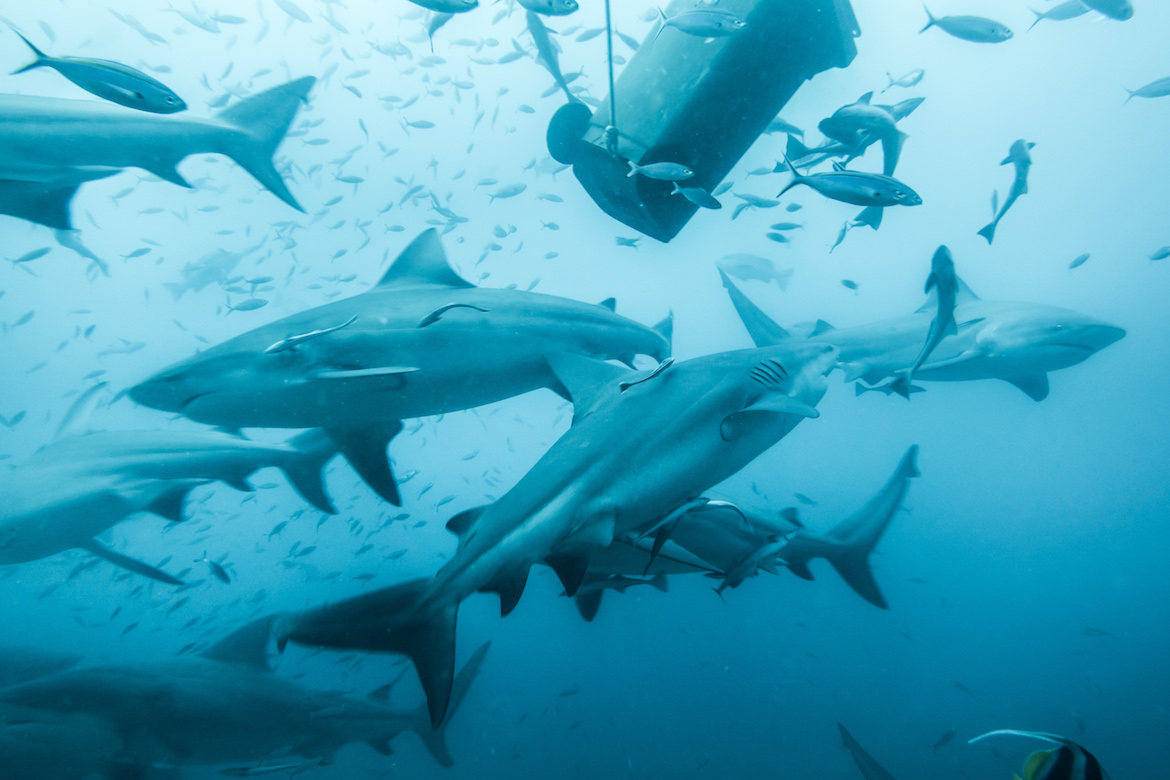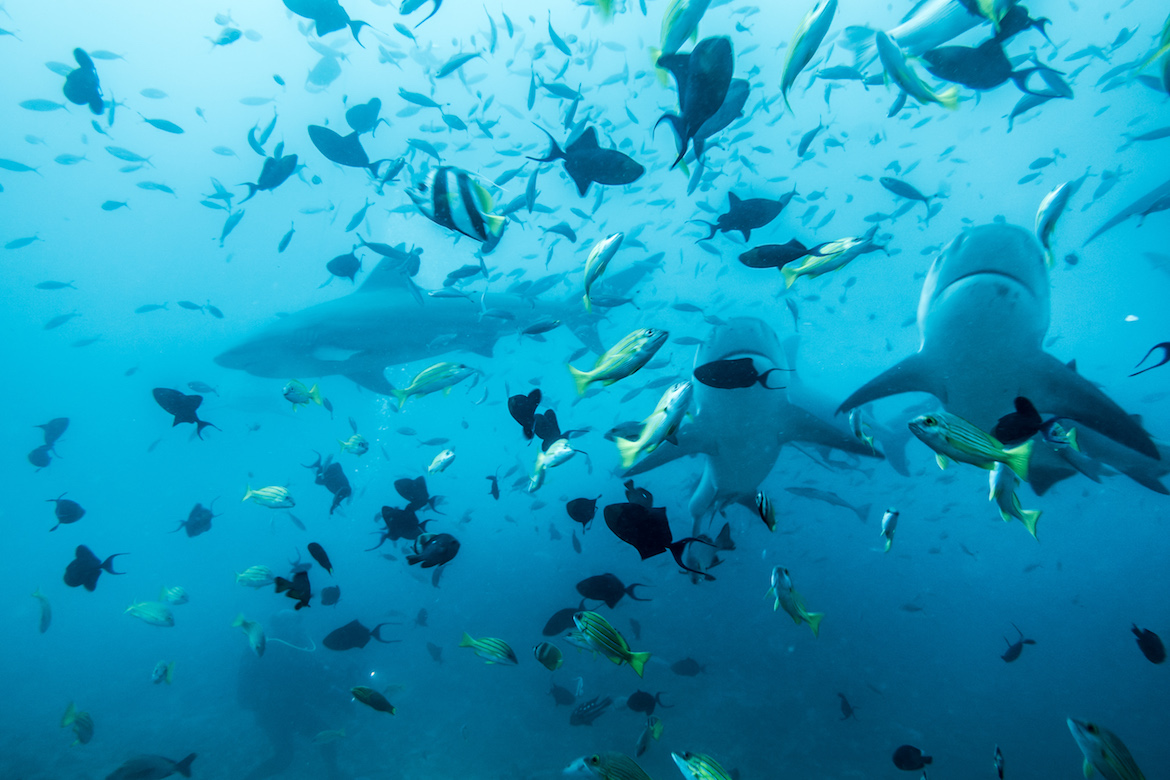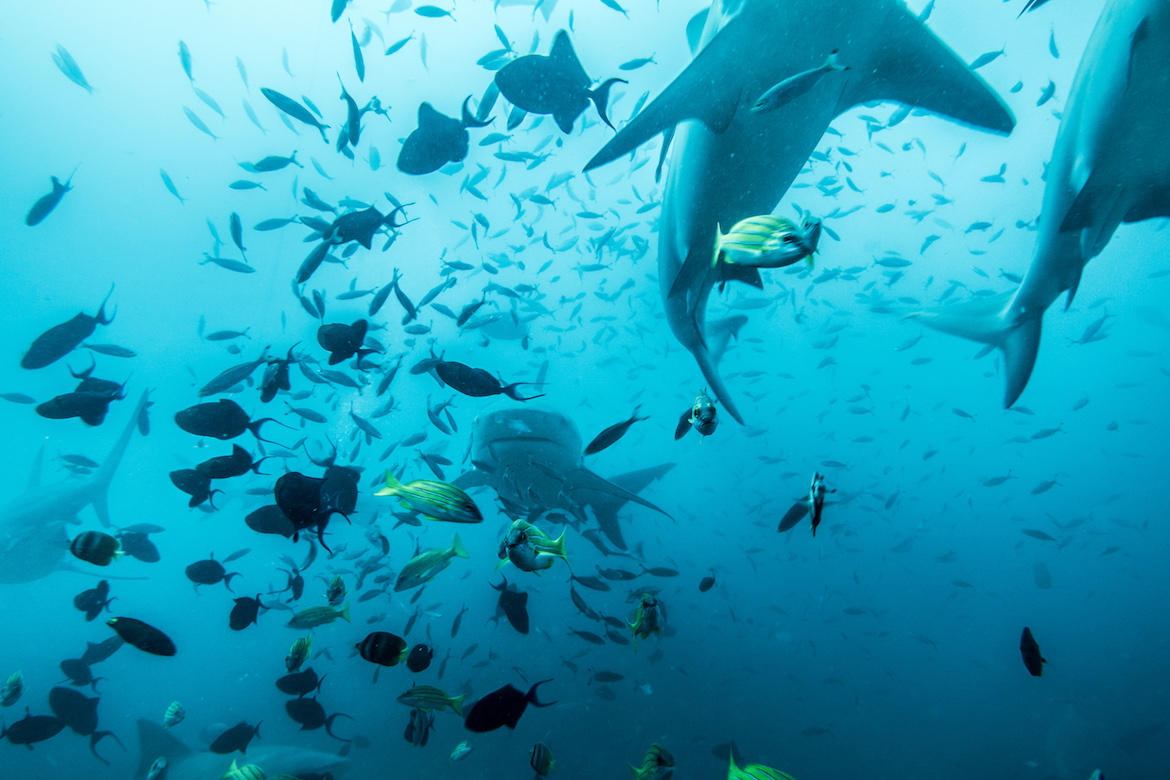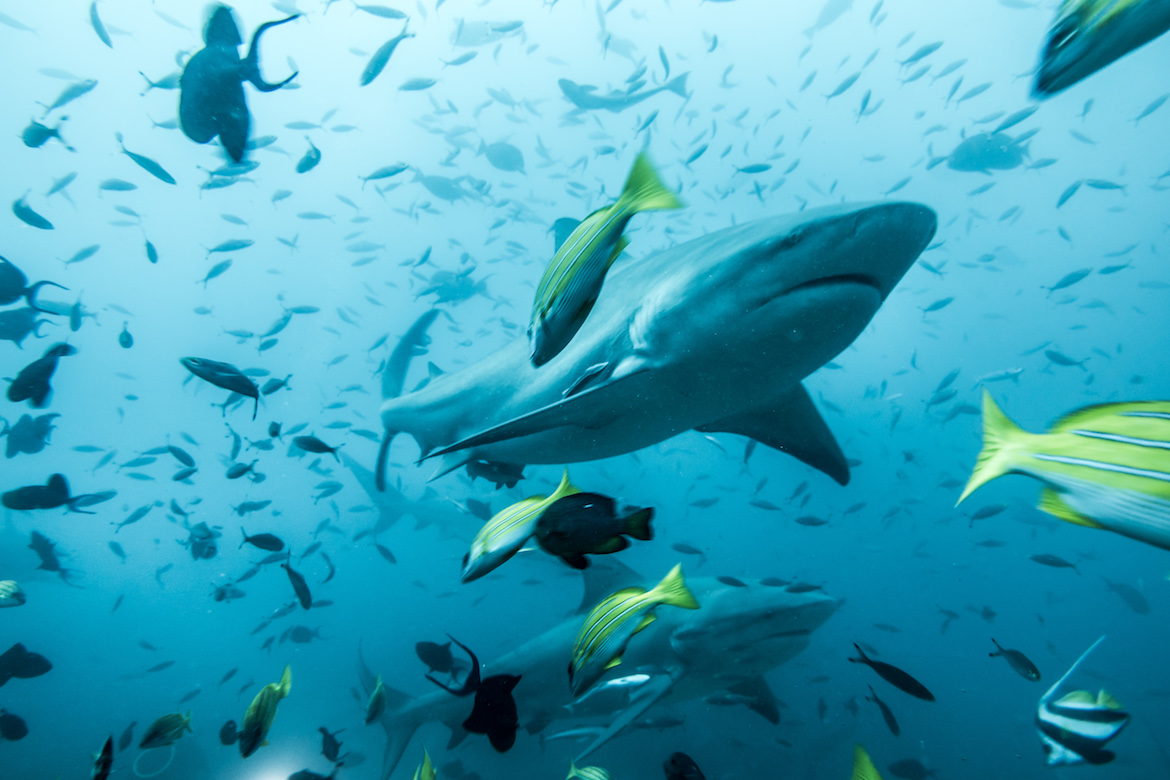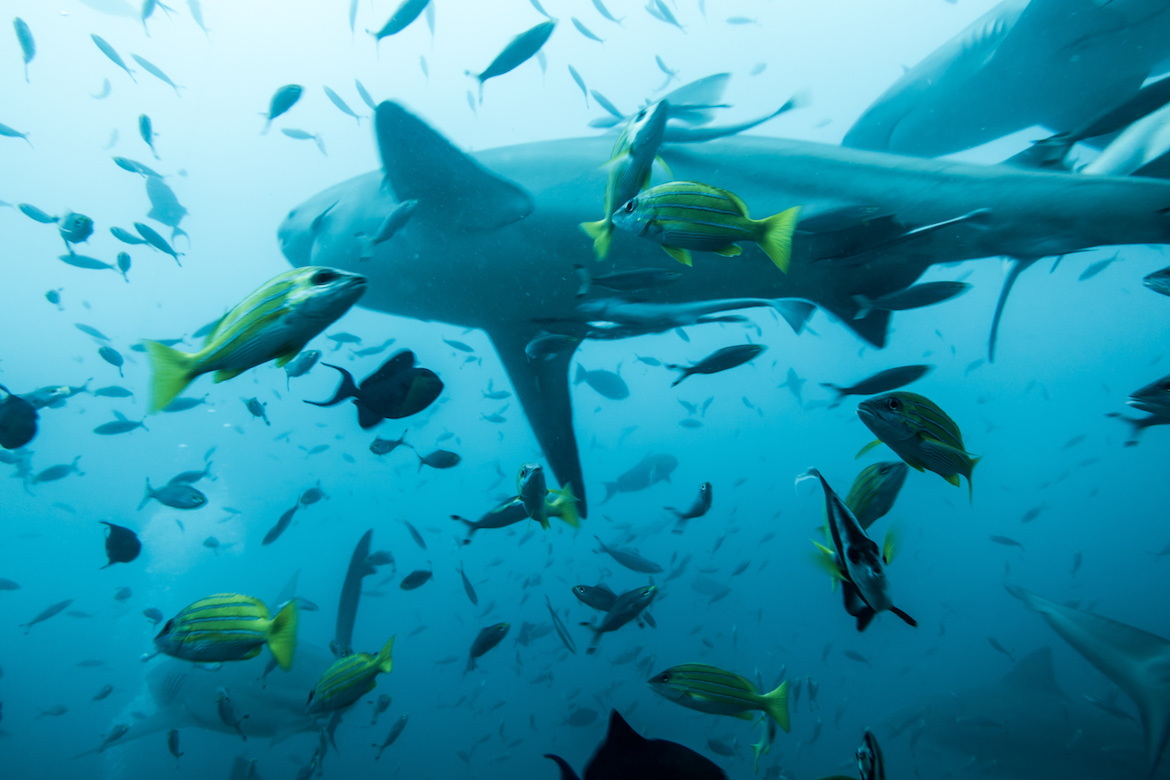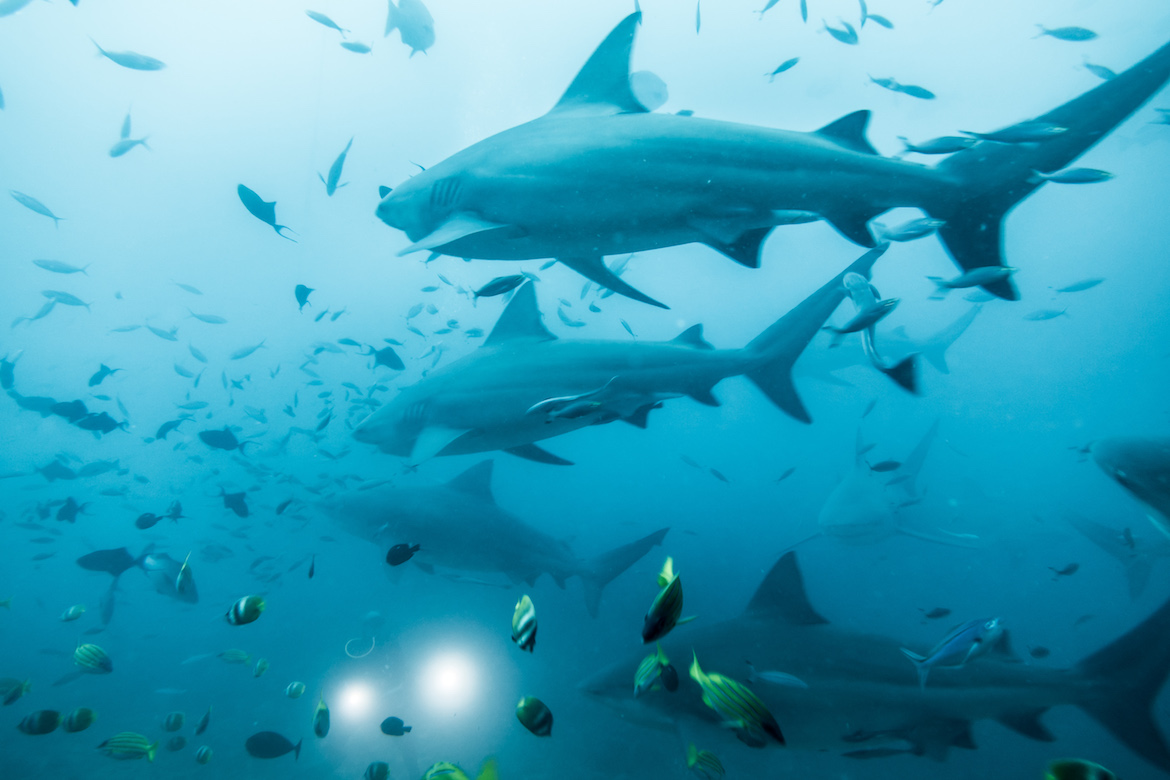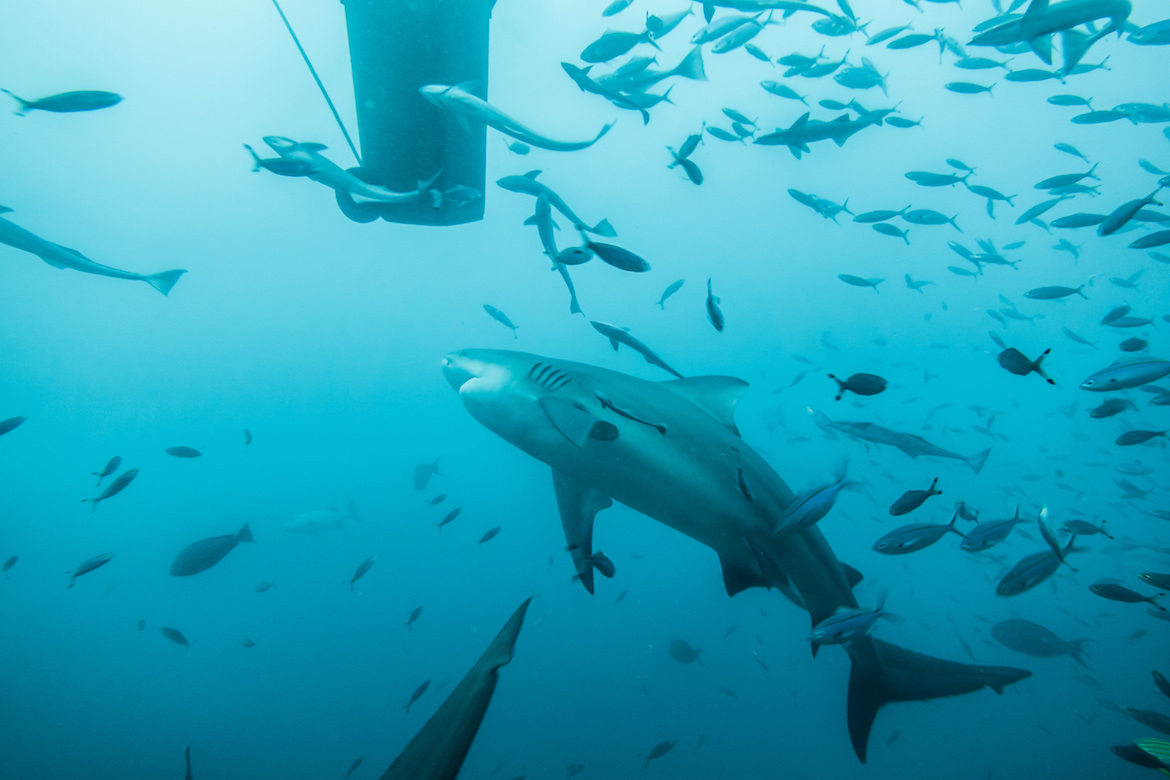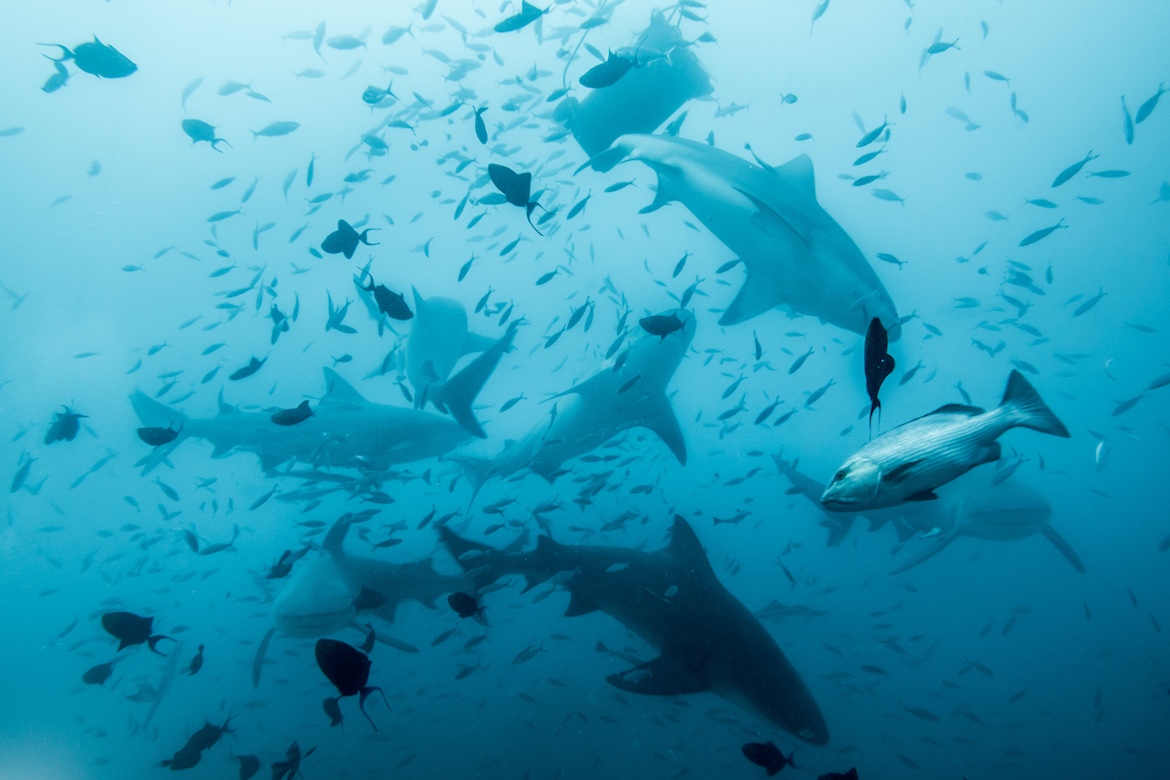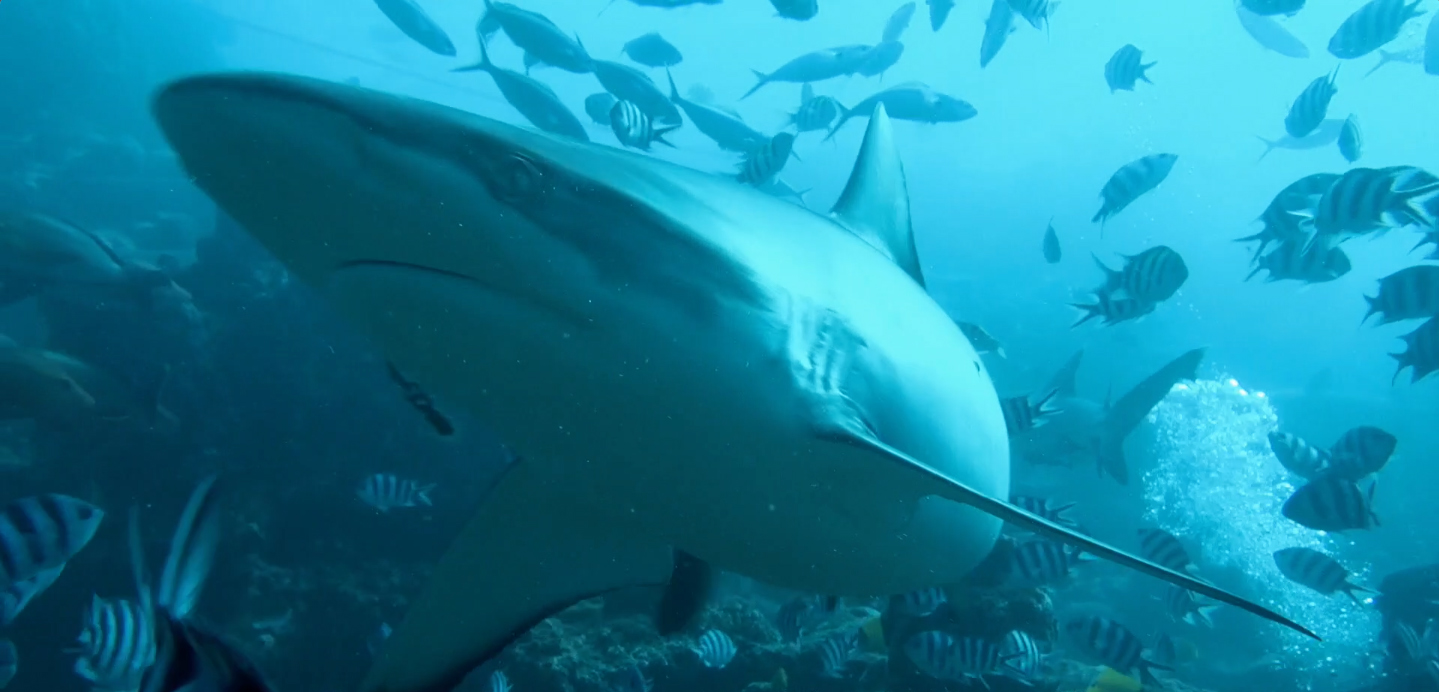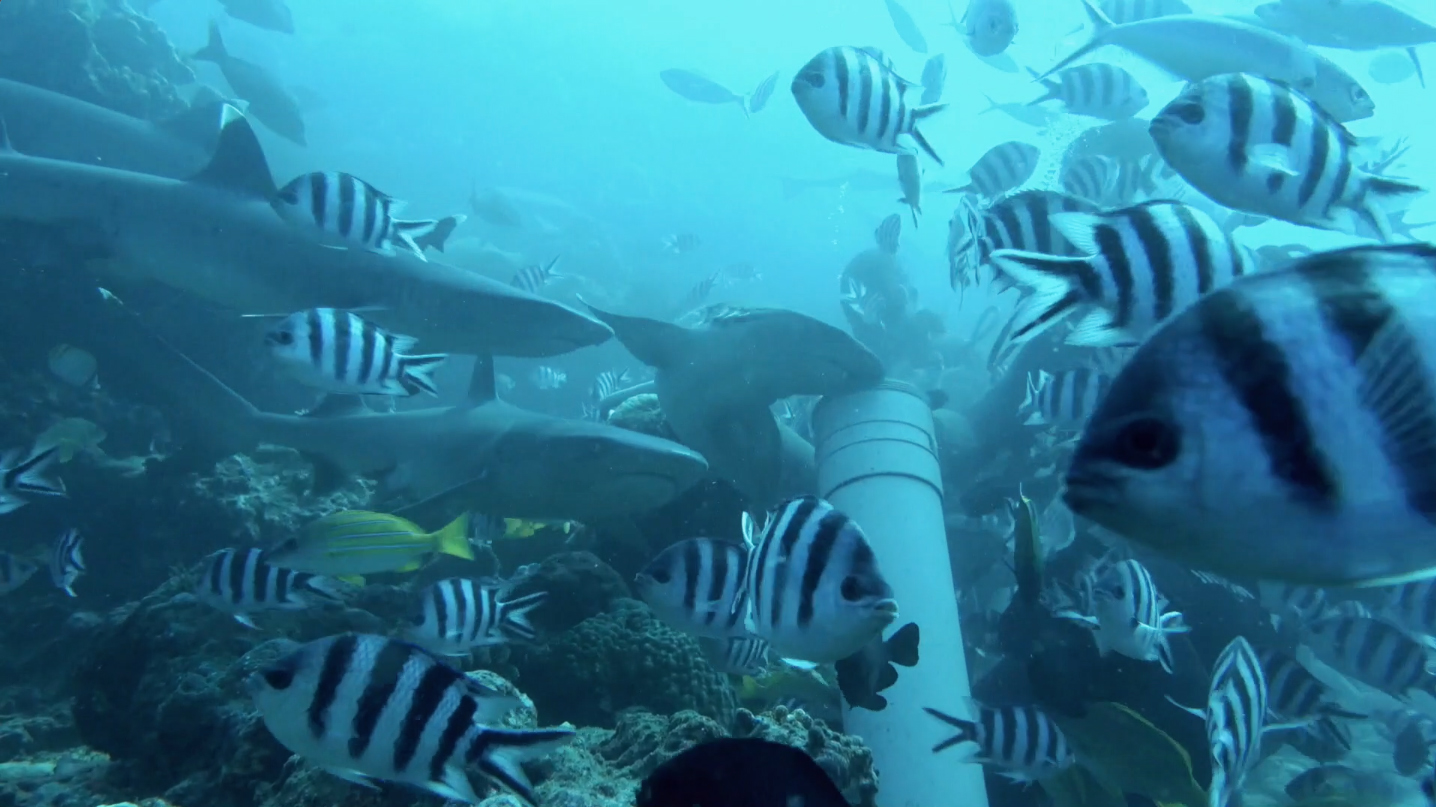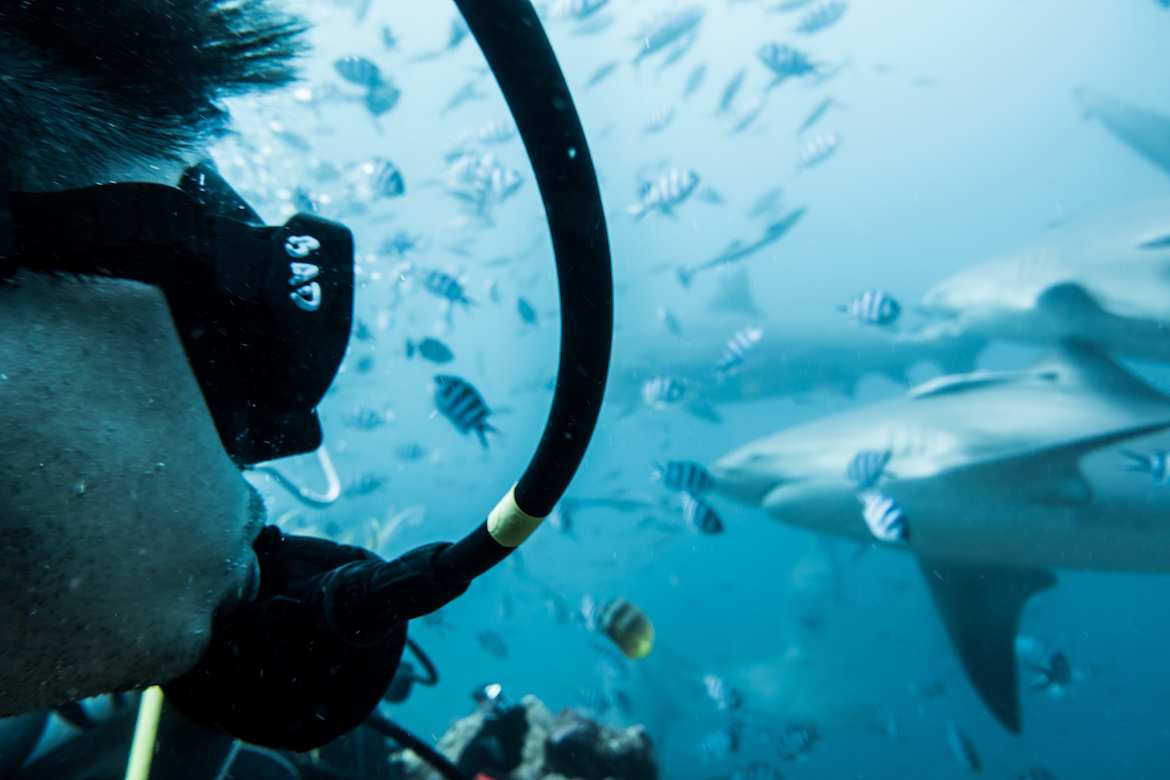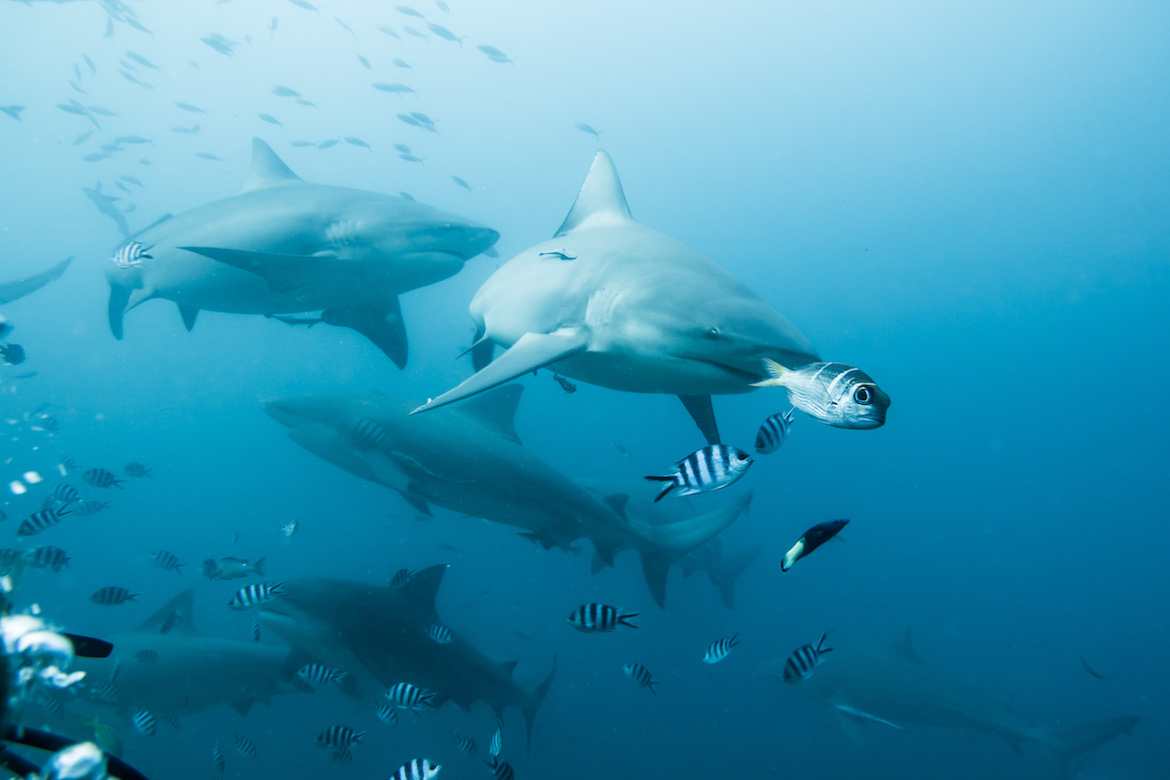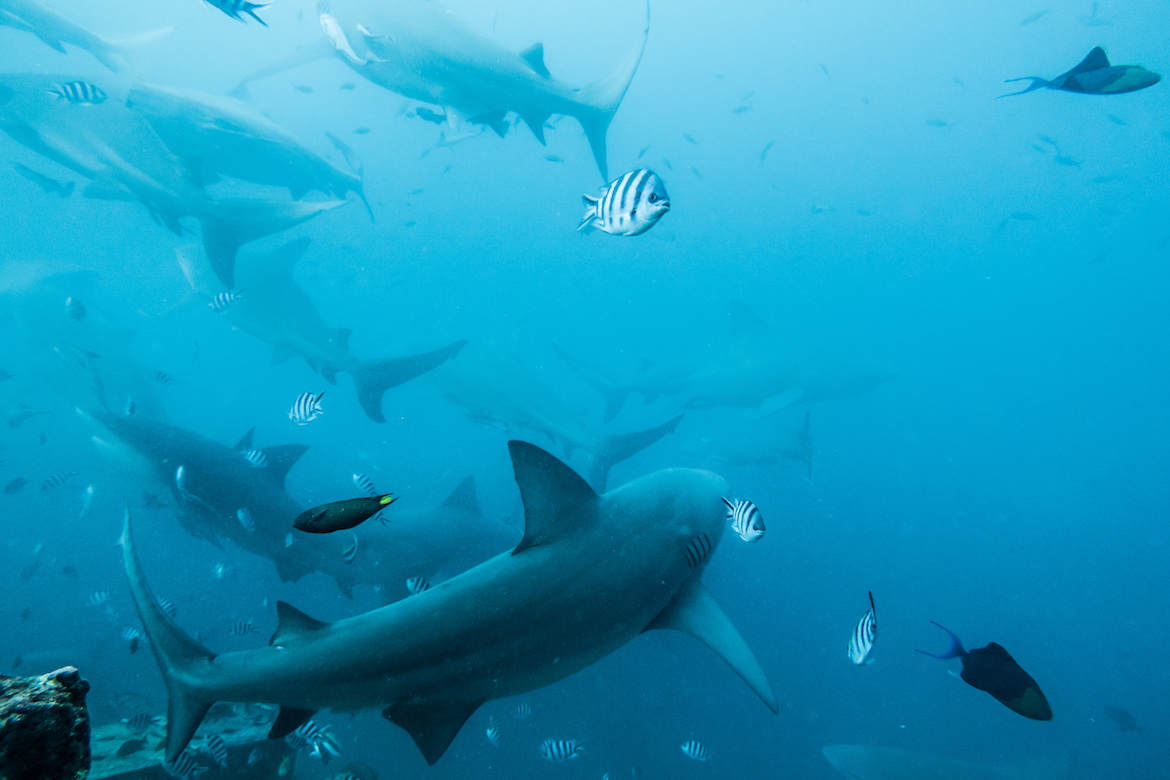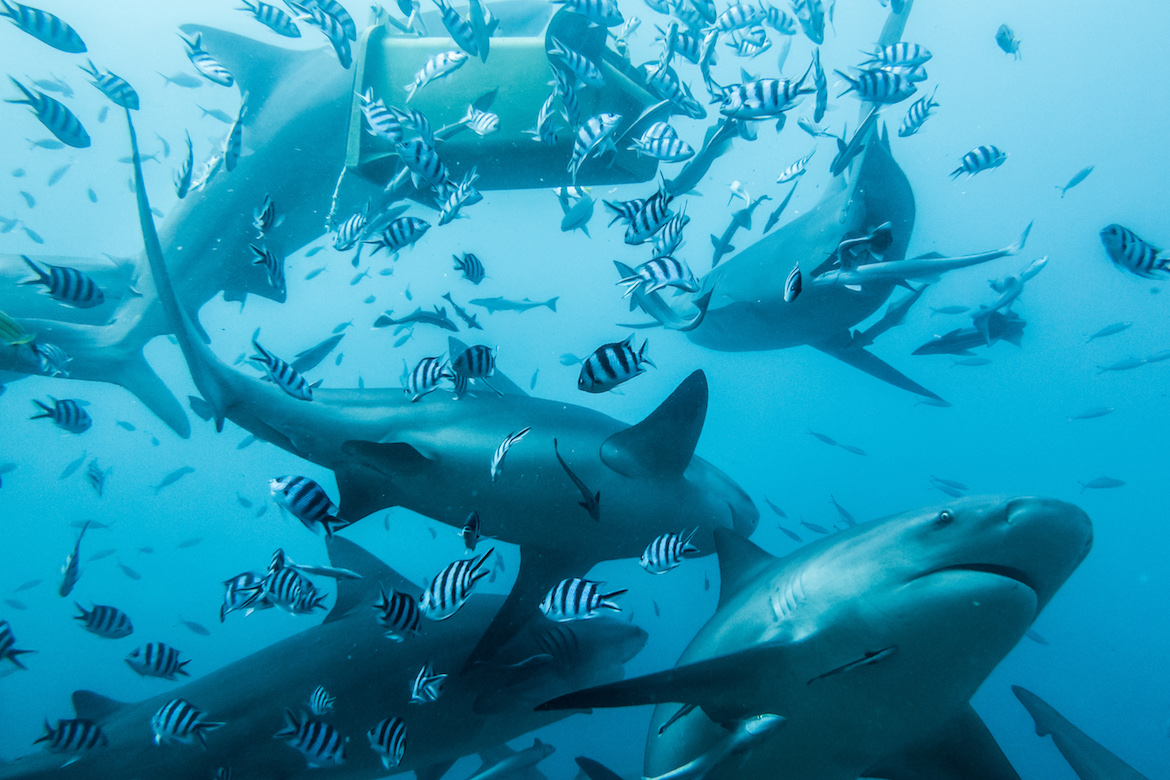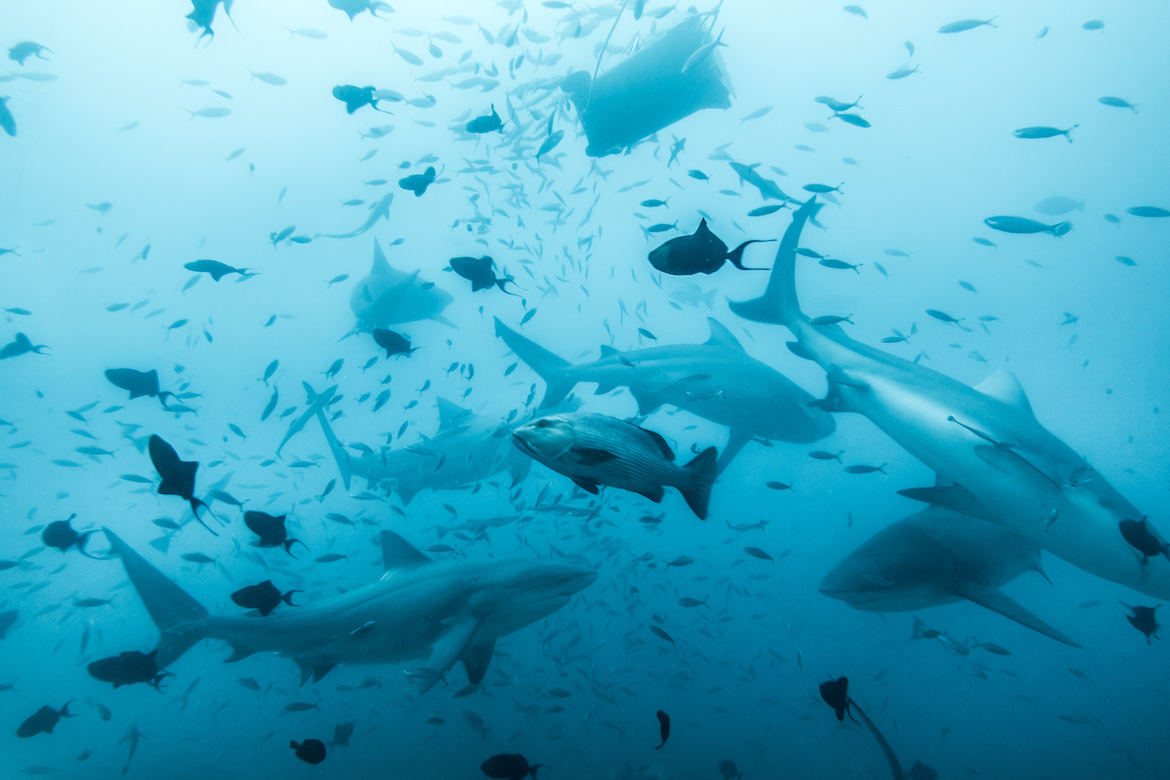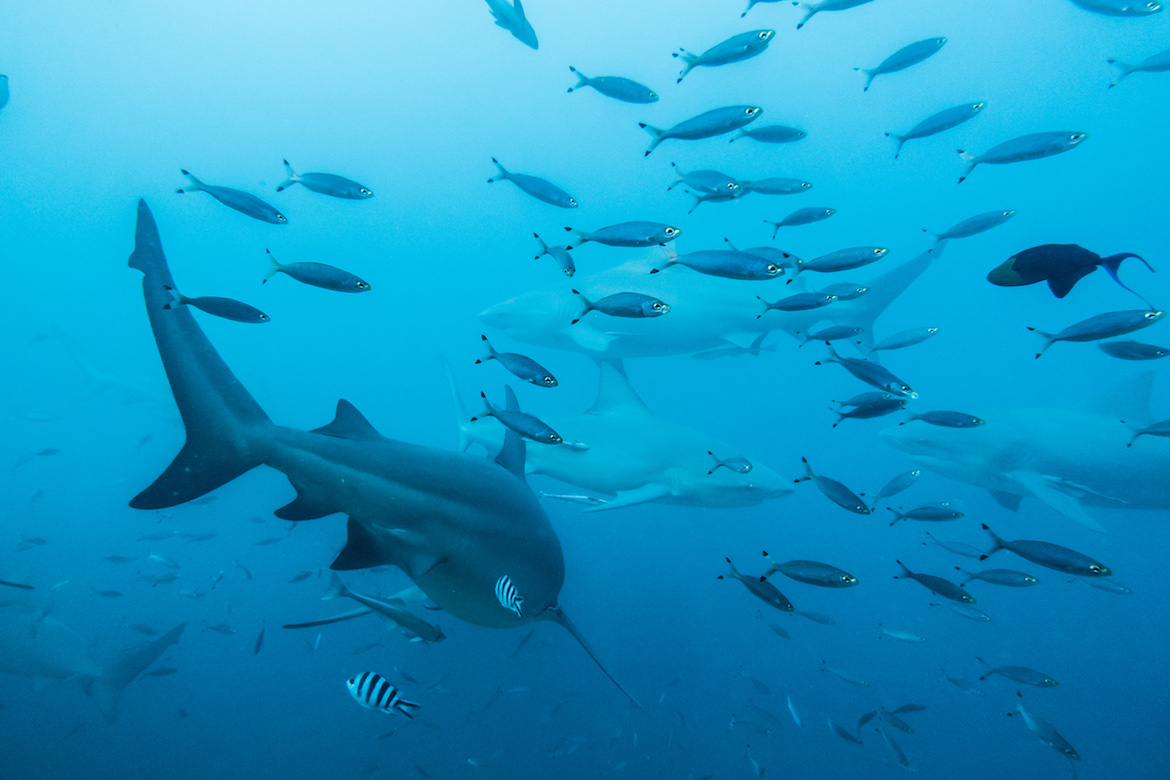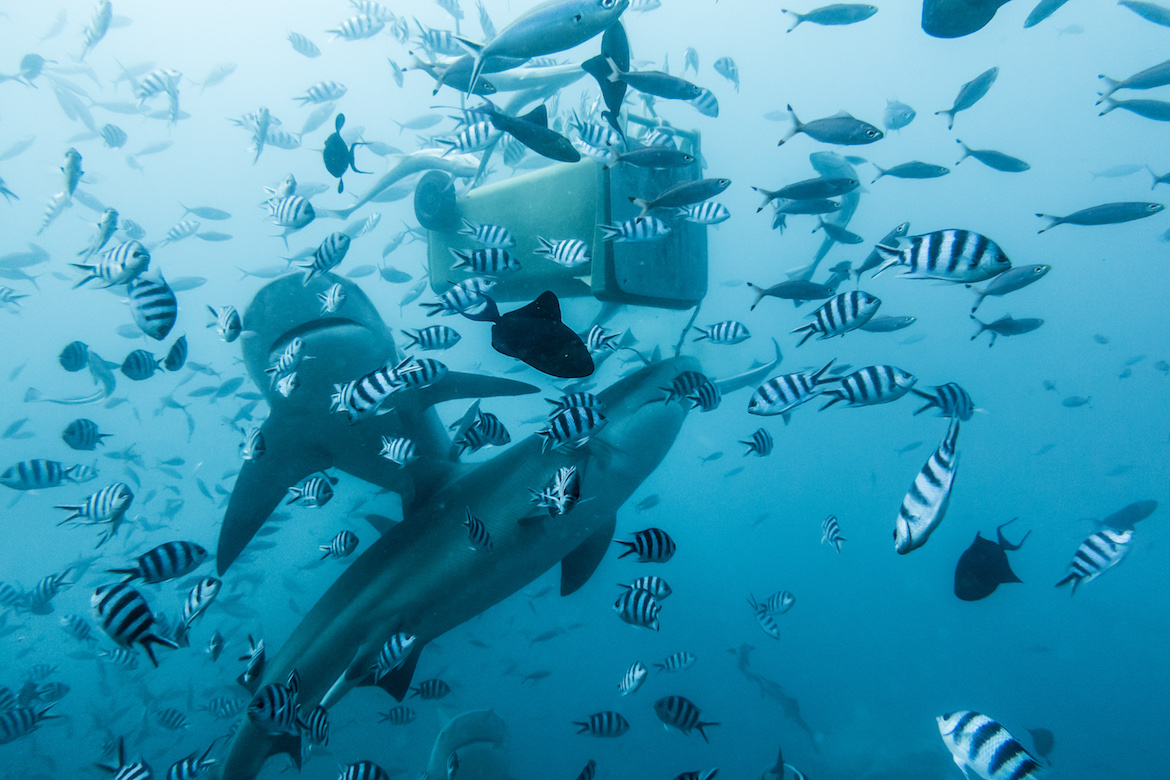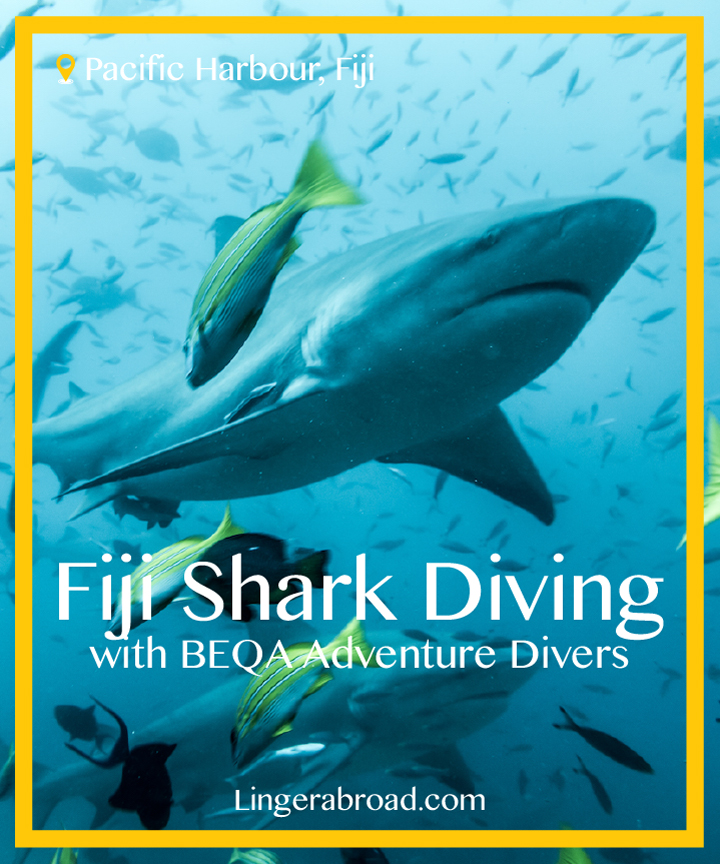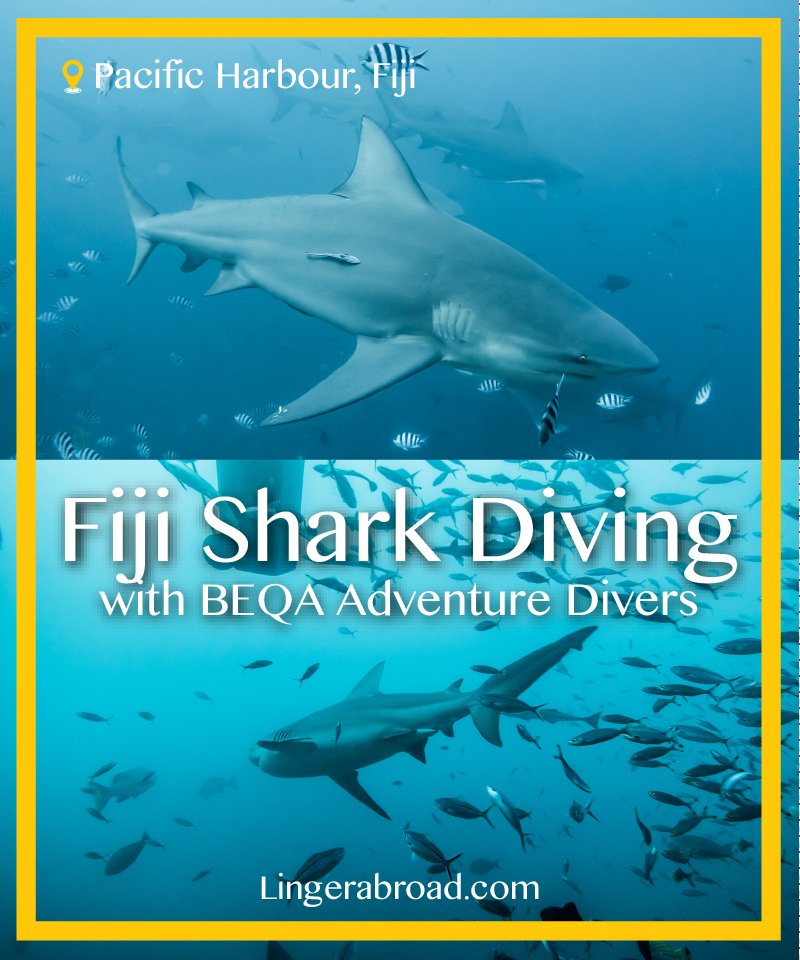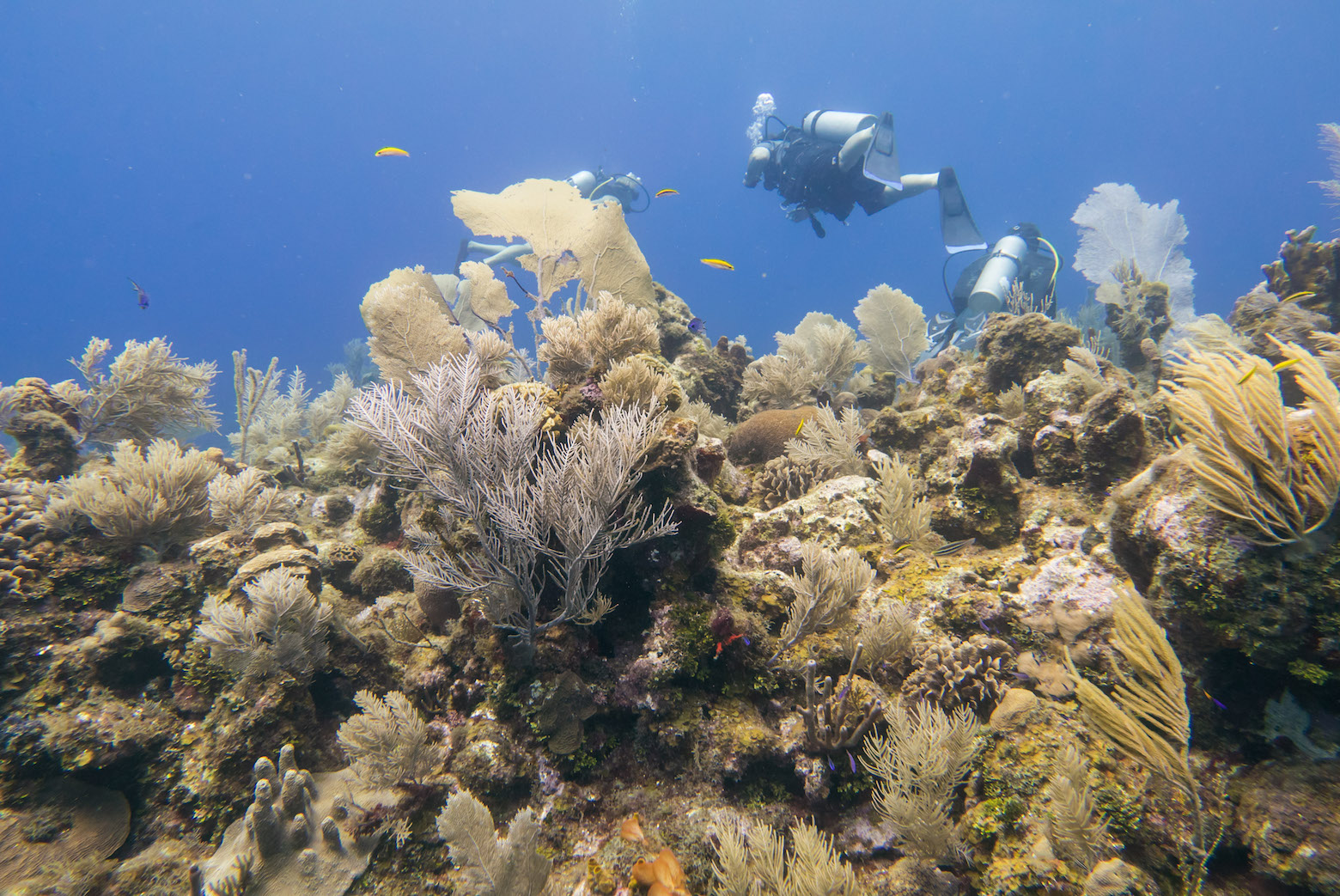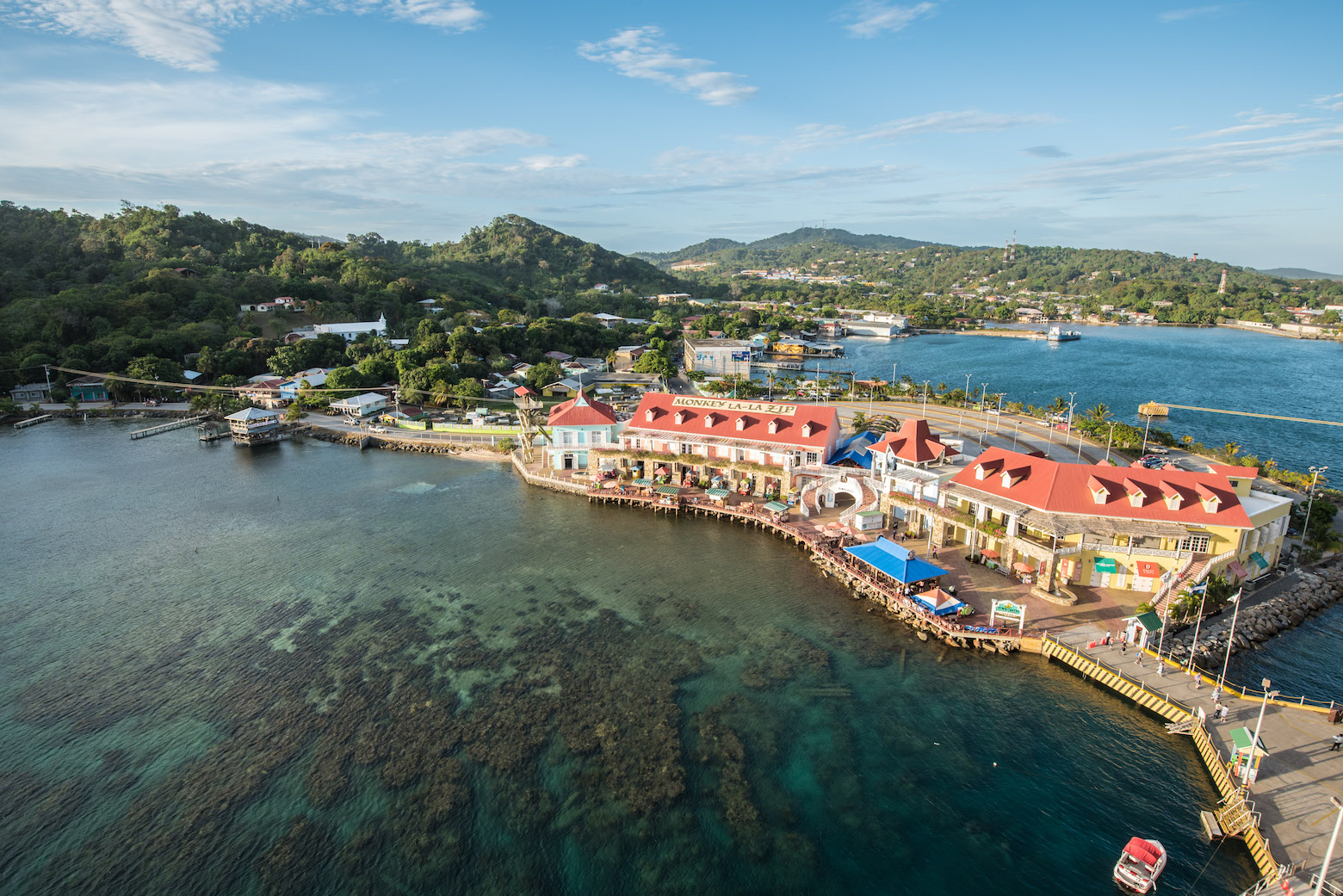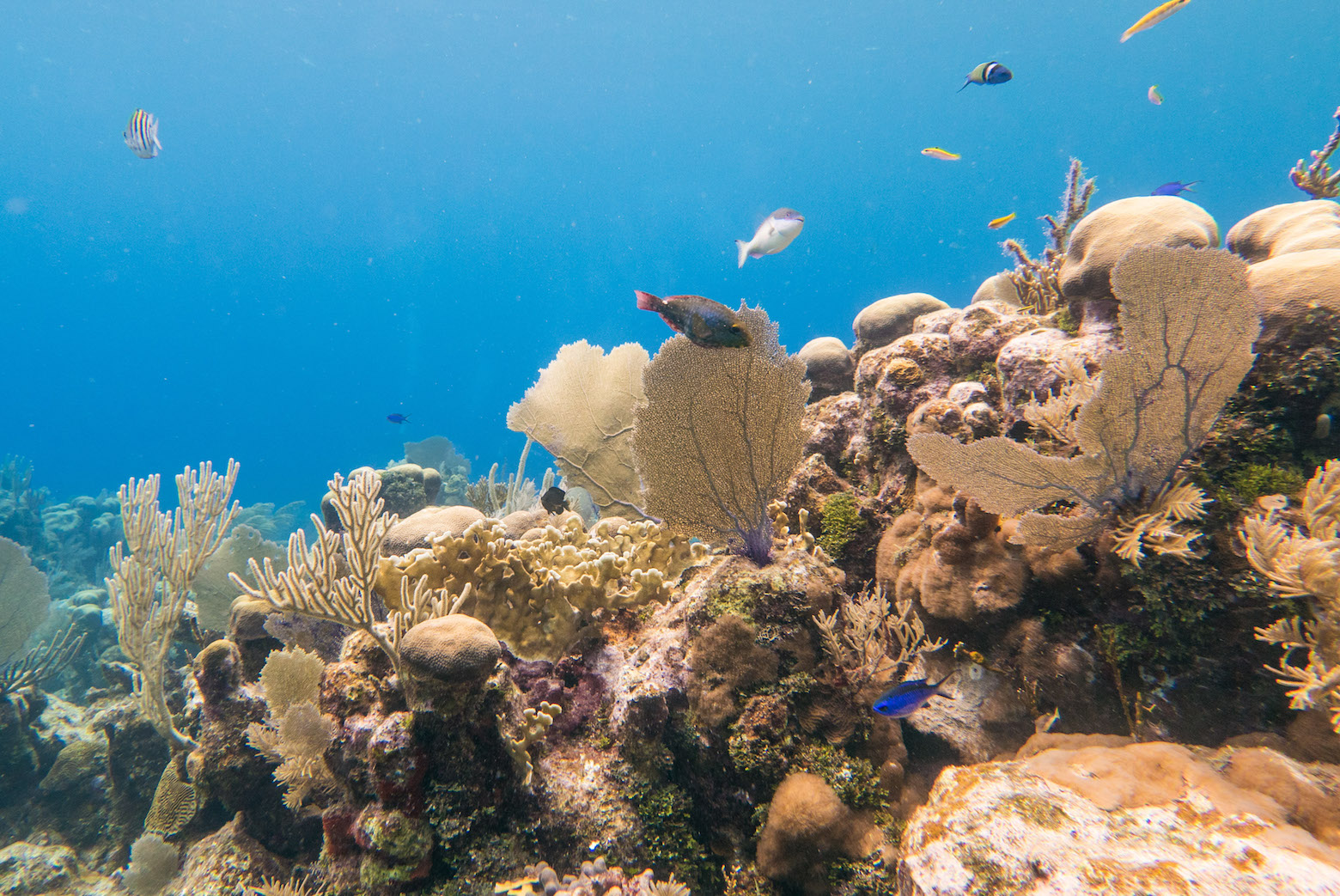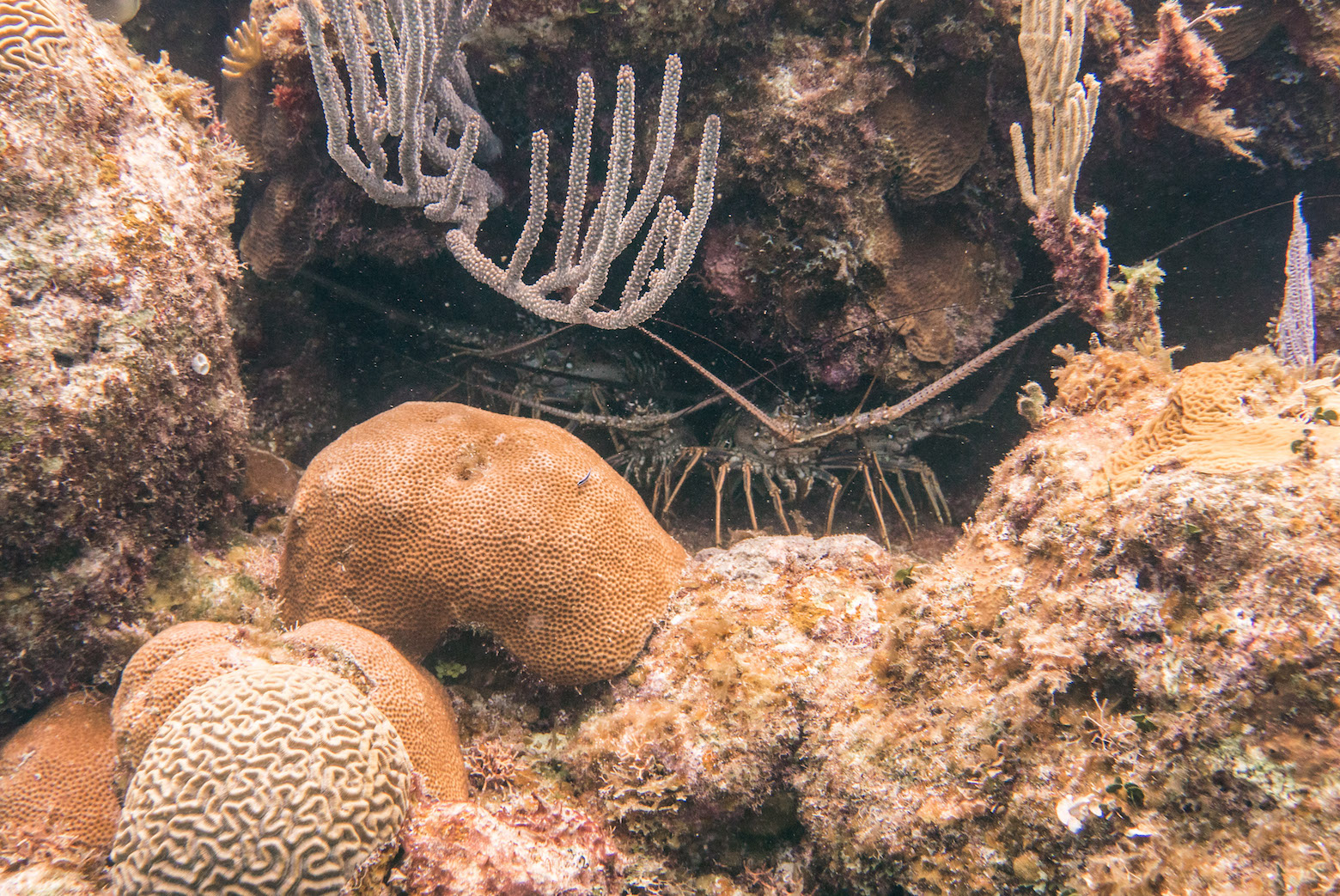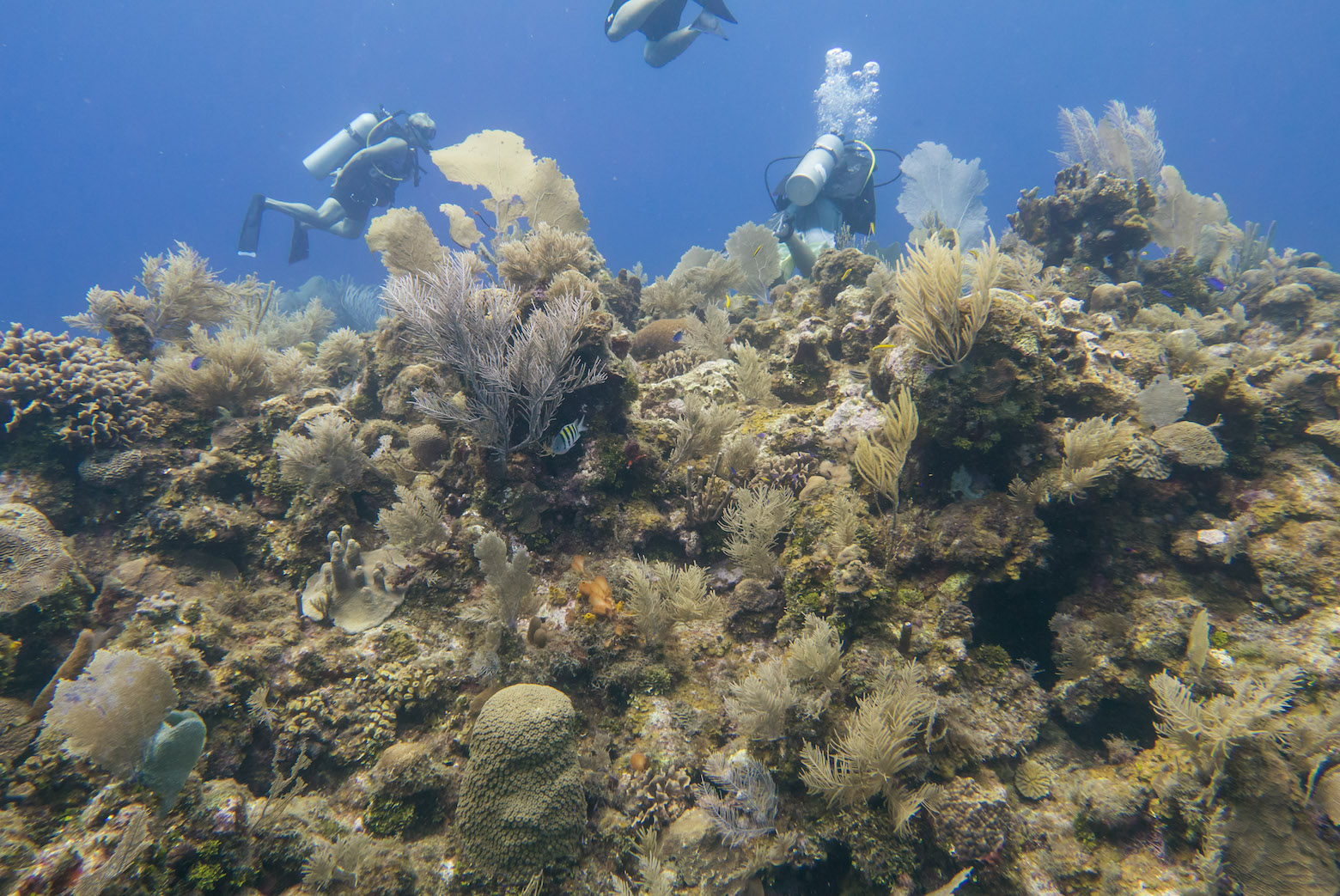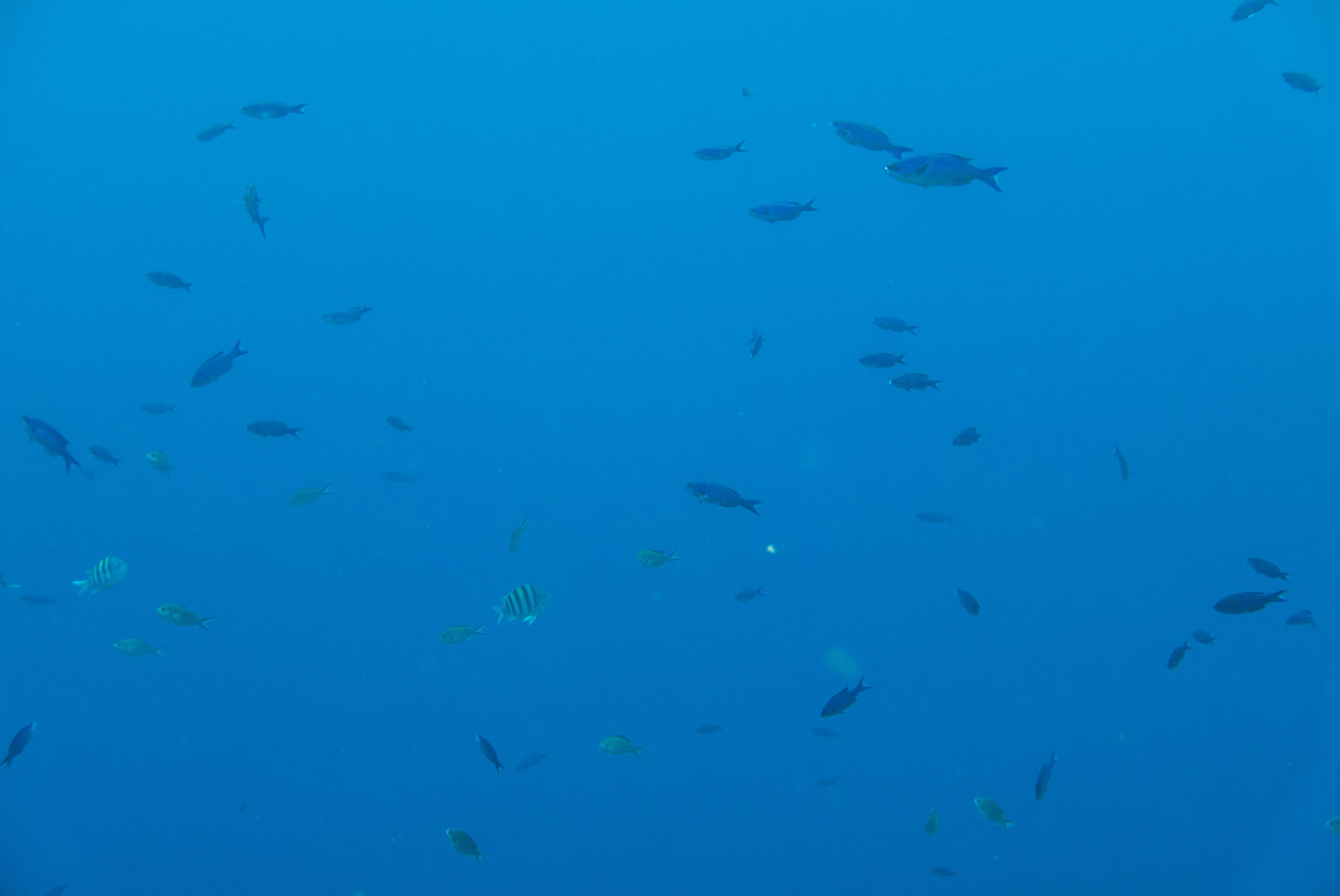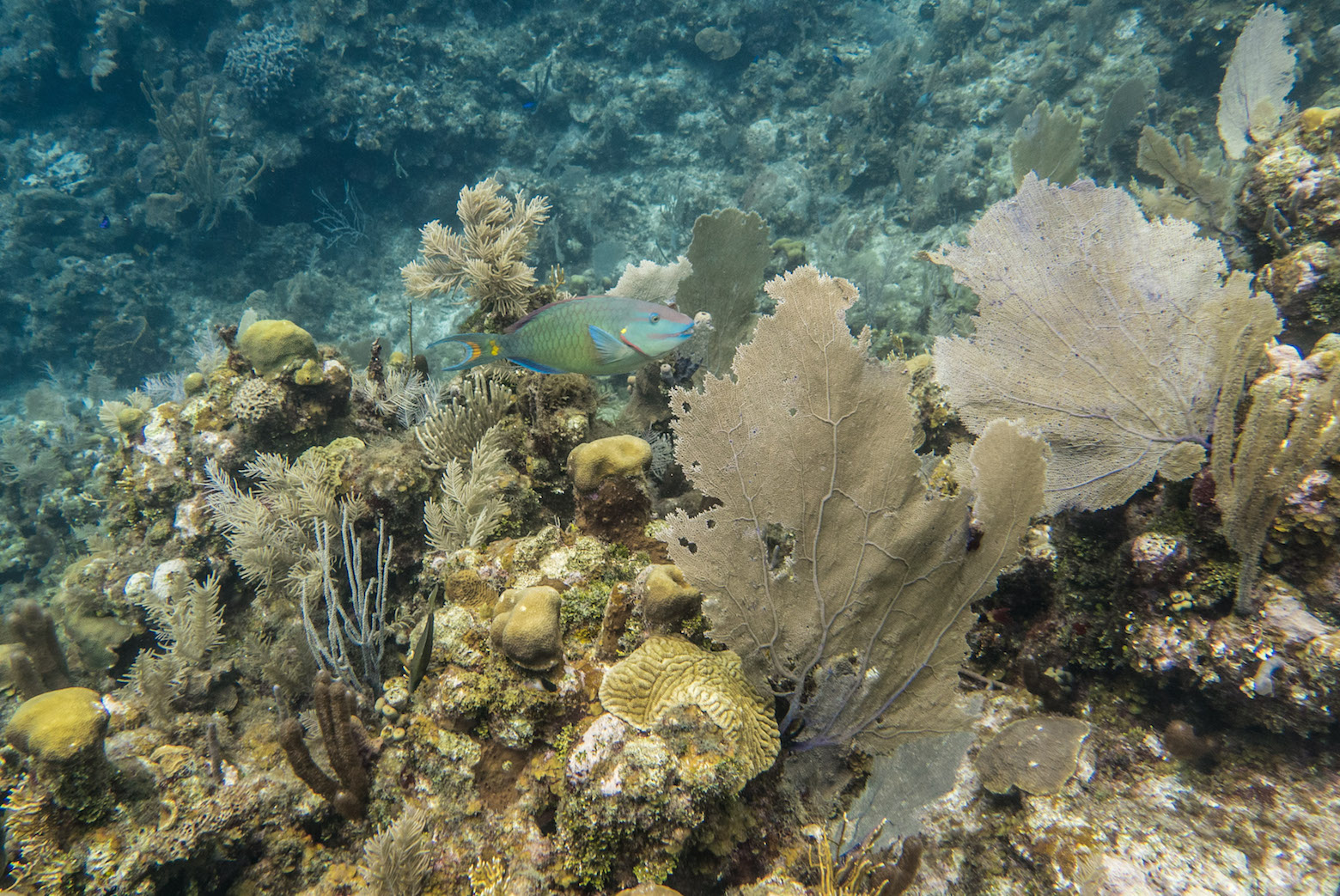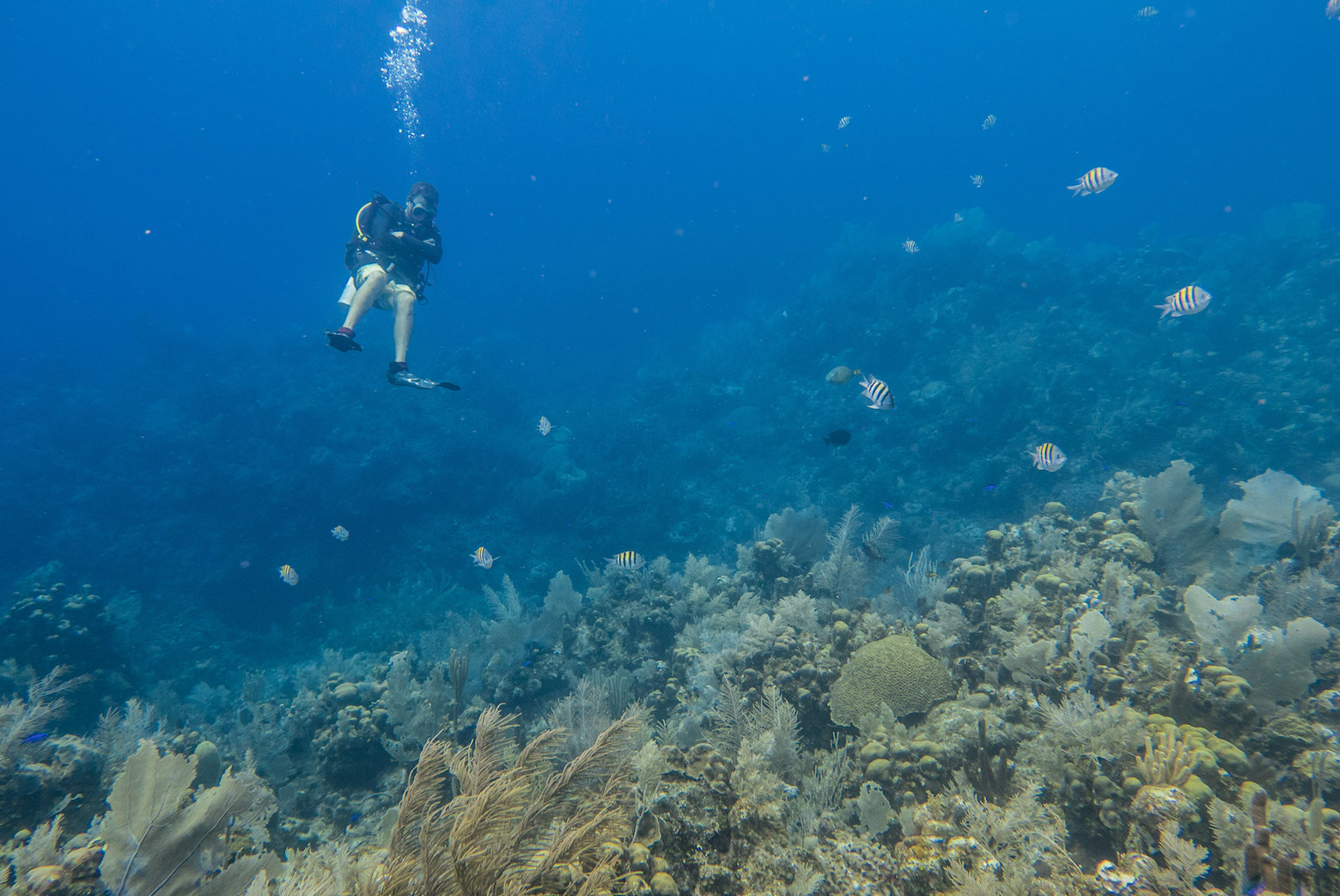Over the years, sharks have developed a reputation for being mindless, bloodthirsty killers that crave human flesh. So when we arrived in Fiji, we found that the BEQA Adventure Divers company in Pacific Harbour provided a diving excursion that would have you surrounded by full-grown bull sharks in the open water and without a cage!. I did the most sensible thing I could do in this situation: I took advantage of the opportunity and booked a dive to get up close and personal with these reputed fearsome creatures!
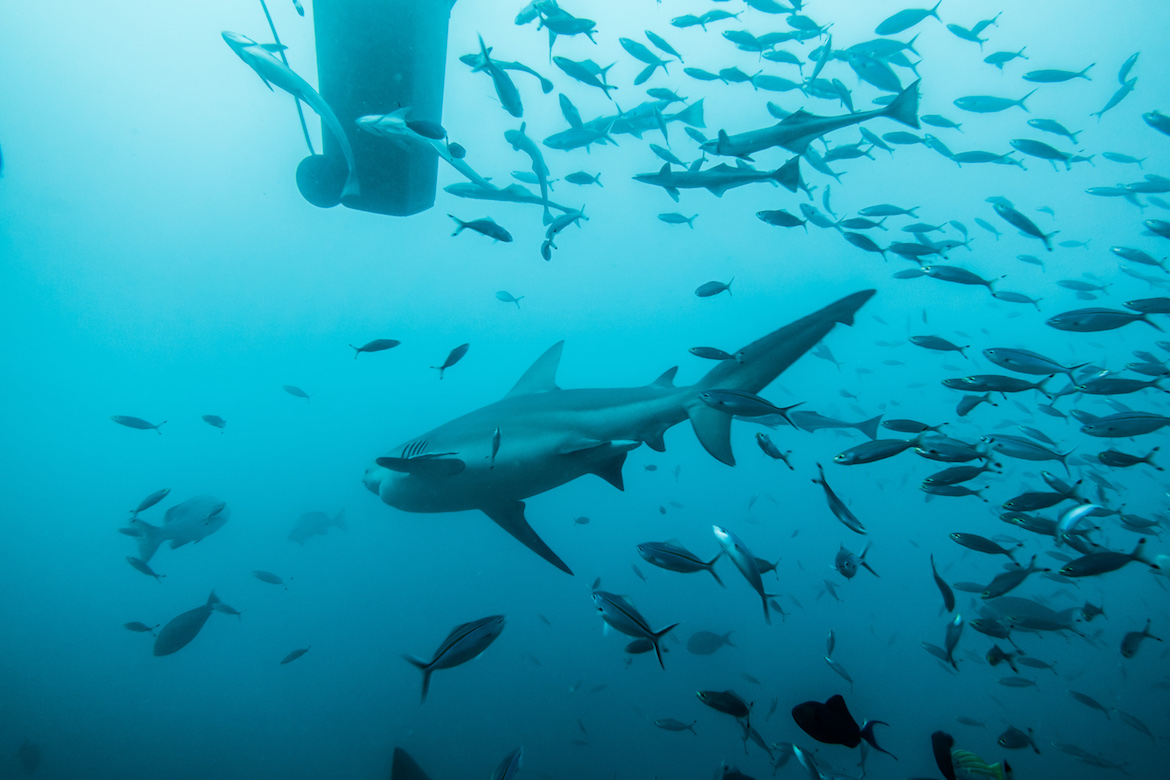
Some of you might be thinking that it sounds like a wee bit dangerous and truthfully, I think our group had a little angst about the dive. While there may always be some risk involving wild animals, our group was comforted by the fact that BEQA Diving Adventures has been operating for 19 years and they have never had a single incident. Whatever tension I may have had quickly into excitement as I was very eager to be the world of sharks!
Our group consisted of 11 divers: 6 BEQA divers and 5 regular divers. Normally, the company recommends having at least 50 dives since you will dive around 100 feet deep; however, as long as you’re comfortable with your diving skills, they will allow you to dive with supervision. I had never gone that deep prior and had only 12 dives under my belt but I had no issues during the dive.
For our first dive, we dove 100 feet to the seabed with some coral around us. Once we got to the bottom, we did not move from our spots and simply waited. At least 3 or 4 BEQA divers stayed near us with aluminum rods to push away any sharks that got too close, while the others set up or fed the bait with tuna heads. After 5 minutes, the first 2 or 3 sharks showed up, and they were massive thick-bodied sharks! Not long after that, more and more sharks started appearing, catching the scent of the bait and wanting to join in on the feeding. Before we knew it, we were surrounded by at least 30 adult sharks, each of them 8-10 feet long! You can see from the pictures how huge they look compared to the trash bin!
The sharks we observed during this part of the dive were bull sharks. These sharks are named for their broad, bulky bodies and for having unpredictable and aggressive behavior. They are one of the very few sharks that can survive in freshwater; because of this, baby bull sharks are born in freshwater environments which serve as natural protection from other saltwater predators. Like all shark species, bull sharks have amazing survival skills that have enabled them to survive for hundreds of millions of years.
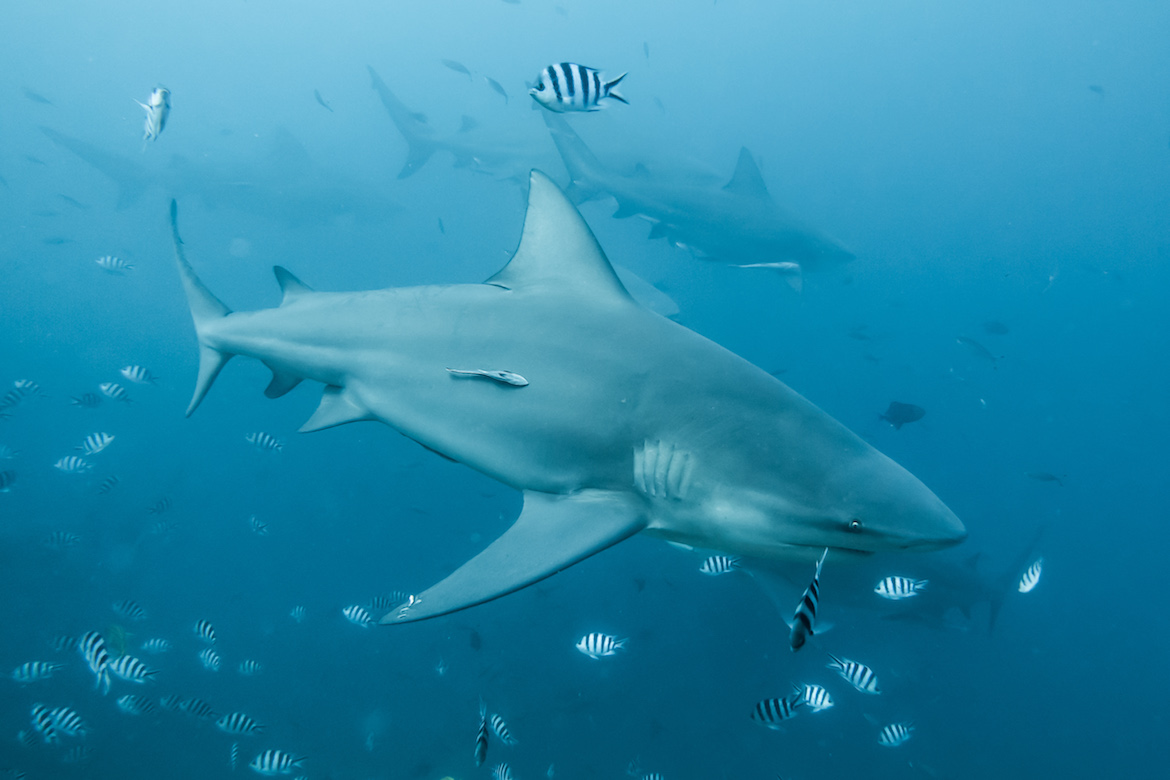
Bull sharks are incredibly powerful too. Several times, a shark would swim above me and you could feel how much power they had when they propelled themselves through the water. Yet, they seemed to glide through the water without any effort, no doubt a quality of their perfectly designed bodies. I was in complete awe of seeing these creatures up close and being able to part of their environment.
Later in the dive, we moved up a reef wall and settled in a more shallow area around 30 feet deep and observed whitetip and blacktip reef sharks. Despite sharing similar names, they do differ in appearance; as their names suggest, you can figure out their species by looking at the tip of their fins to see what color they are. Whitetips also have more slender bodies and broad heads while blacktips have prototypical shark bodies. These sharks grow to only about 5 feet in length, so they’re generally harmless to humans, but proficient hunters in the reefs.
For our last dive, we went to a second spot that would again feature the bull sharks. This time, our area was a little more open and less reef around us. This meant that the sharks were more likely to swim really close in front and above us as they passed by and the BEQA divers would use their aluminum poles to push any away that got too close. 5 minutes after the bait was set up, the bull sharks appeared. (Depending on the season, tiger sharks will appear too, which grow up to 16 feet in length! We did not see any tiger sharks on these dives)
Once again, at least 30 bull sharks showed up and circled around us and the bait. I don’t know what the team’s definition of “too close” was but some of those sharks got REALLY close. In some cases, the sharks would approach 2 or 3 feet away from us and then swim directly above us, sometimes brushing our gear. One shark brushed against a diver’s face! However, I didn’t feel like I was in any danger during the dives, though I’m not sure if I can say the same for everyone else. In any case, it was simply spectacular to watch the sharks in their element.
Sharing the waters with these sharks reinforced several things I knew about sharks. These animals are not mindless or bloodthirsty killers but very intelligent creatures that only do what they do to survive. If you don’t bother them in their environment, then they’re very unlikely to bother you. (Sharks apparently also hate the sound of scuba gear.) And in instances where a shark does bite a human, they are due to curiosity or mistaken identity. This leads me to believe that as long as humans could appreciate and continue to understand these creatures, then they pose little threat to people and we can enjoy a co-existence.
Unfortunately, due to the bad reputation from bad press and little understanding of the species, sharks have become a public enemy and have paid a steep price. Last year, over 100 million sharks were killed with 73 million being used for shark fin soup in China and SE Asia. Many species of sharks are now facing endangerment due to severe overfishing, slow reproduction rates and loss of habitat. Sharks have existed for 450 million years but in only the last century, sharks now face the real possible threat of extinction. My hope is that, as we continue to learn and debunk the negative perceptions of the species, then we can save them so we can continue to enjoy them in their environment.
For more information about this dive if you’re visiting Fiji, visit the BEQA Adventure Divers website for more information. Be sure to check out our full video of our dive and if you think you might want to dive with sharks, be sure to also give us a Pin below! Happy shark diving!

